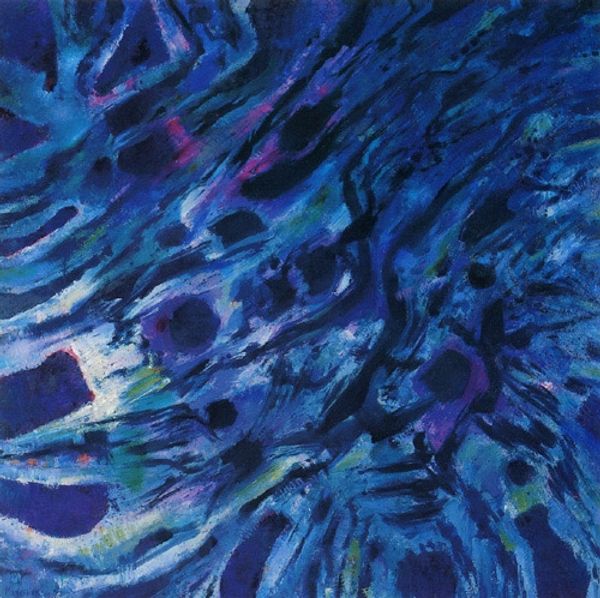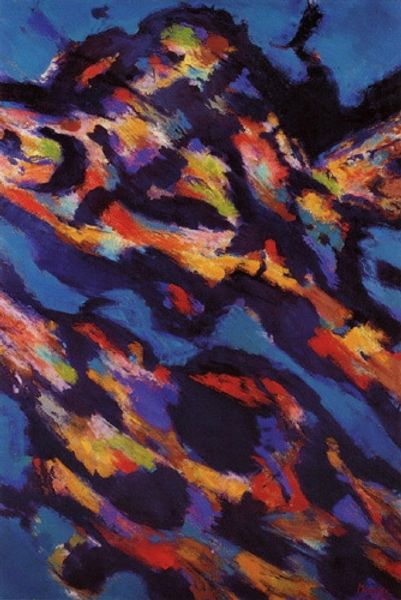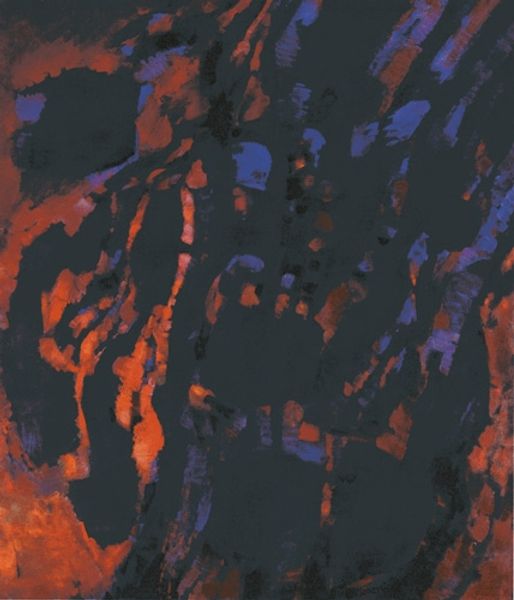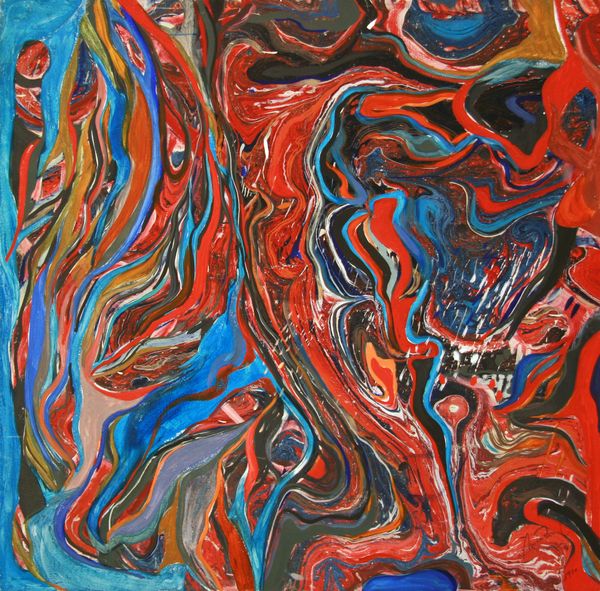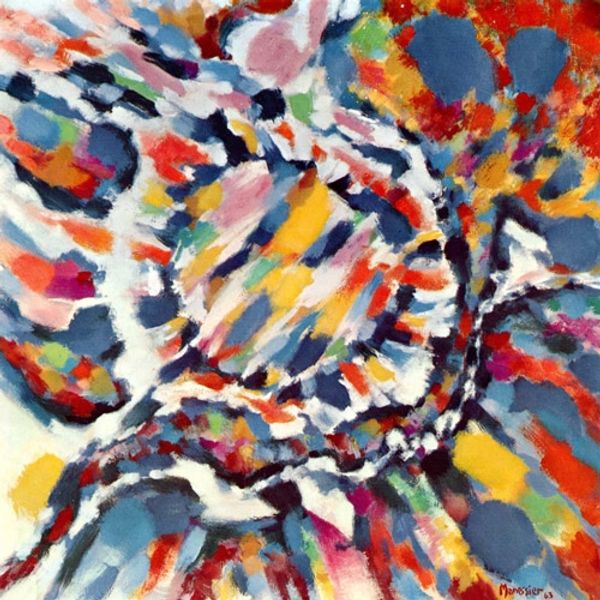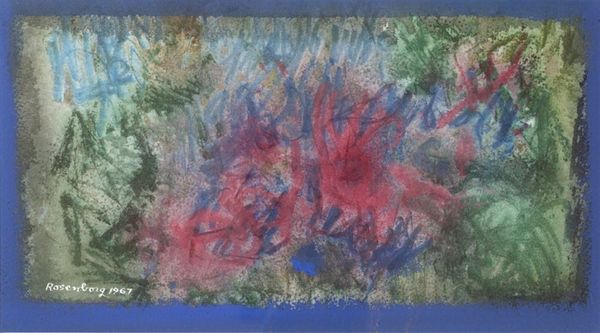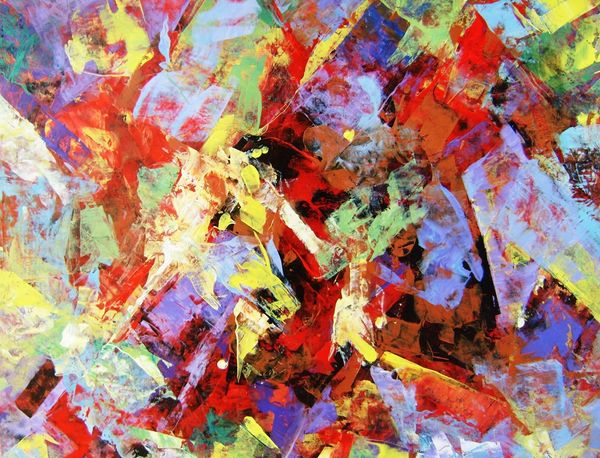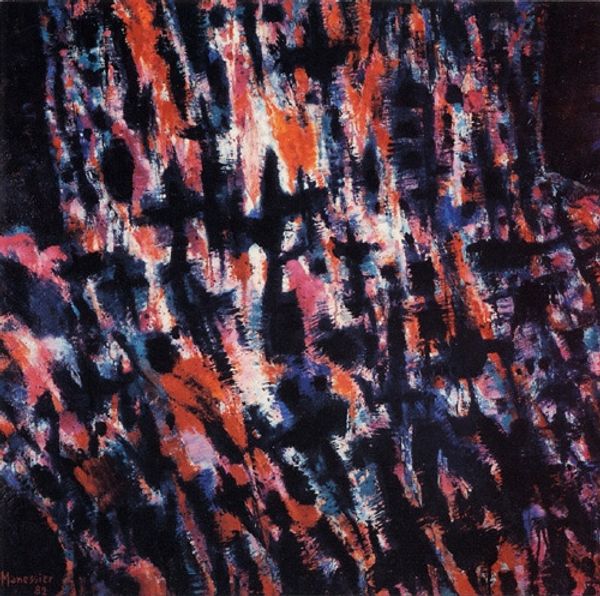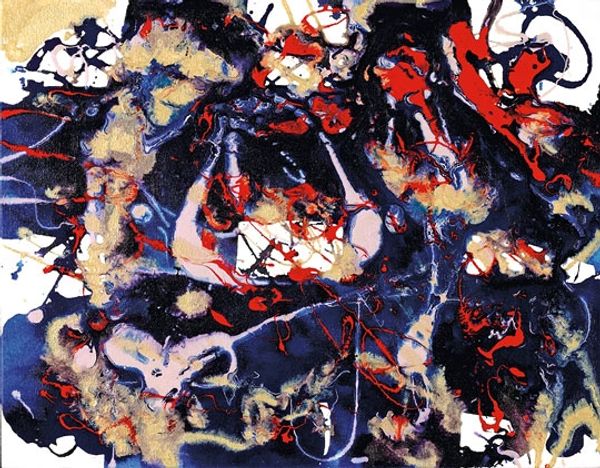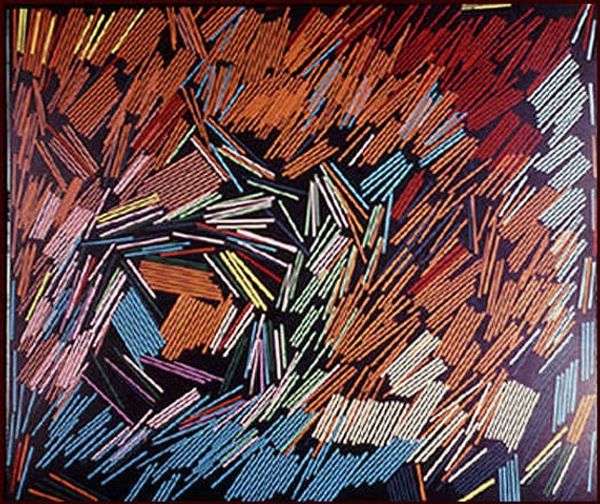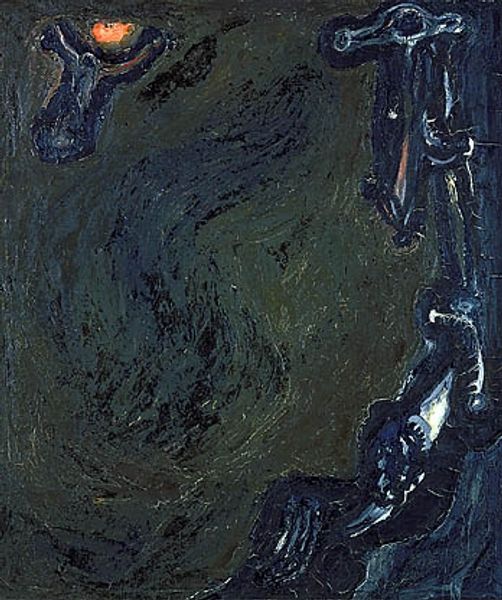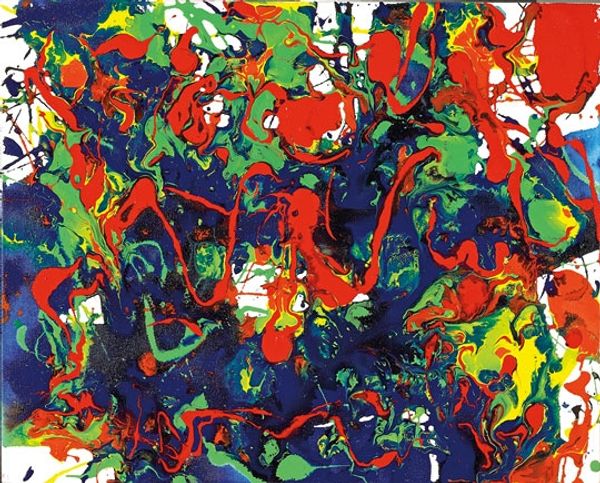
painting, acrylic-paint
#
abstract-expressionism
#
abstract expressionism
#
organic
#
painting
#
acrylic-paint
#
abstract pattern
#
abstraction
Copyright: Alfred Manessier,Fair Use
Curator: Allow me to introduce Alfred Manessier's "Fishes’ Sanctuary," painted in 1969, an acrylic on canvas piece. Editor: It's certainly dynamic! The swirl of blues and blacks—it feels like peering into some deep, turbulent current. What strikes me is how dense the material seems, all that acrylic building texture. Curator: The organic abstraction places the artwork in dialogue with post-war anxiety, specifically environmental degradation. Manessier was very much driven to underscore humanity’s disruption of fragile aquatic environments. Editor: Interesting. To me, the means of production contribute a different meaning here. Consider that this is 1969 – a period of new polymer technologies offering quicker drying times and vibrant colour. "Sanctuary" becomes then about a human capacity to rapidly build *artificial* habitats and how even with "sanctuaries," production can have negative impacts. Curator: That is astute; indeed, these newer methods may have led to faster, more abstracted work as the artwork departs from natural form. I feel that understanding Manessier's engagement with postwar philosophical debates further expands the artwork’s meaning: He was interested in the construction of a collective identity against alienation after periods of colonial devastation. "Fishes’ Sanctuary," is not necessarily a safe space as much as a visual manifesto that questions traditional artistic practices to build new shared environmental responsibilities. Editor: I’m glad that we agree that there are various productive routes for interpretation. Reflecting upon the materials emphasizes humanity's power and capacity in relation to natural transformation – how making impacts being, as the sanctuary has different values to the fishes vs. its viewers! Curator: A great reminder that environmental issues require new social arrangements, and are deeply entangled in histories of materiality and construction!
Comments
No comments
Be the first to comment and join the conversation on the ultimate creative platform.
